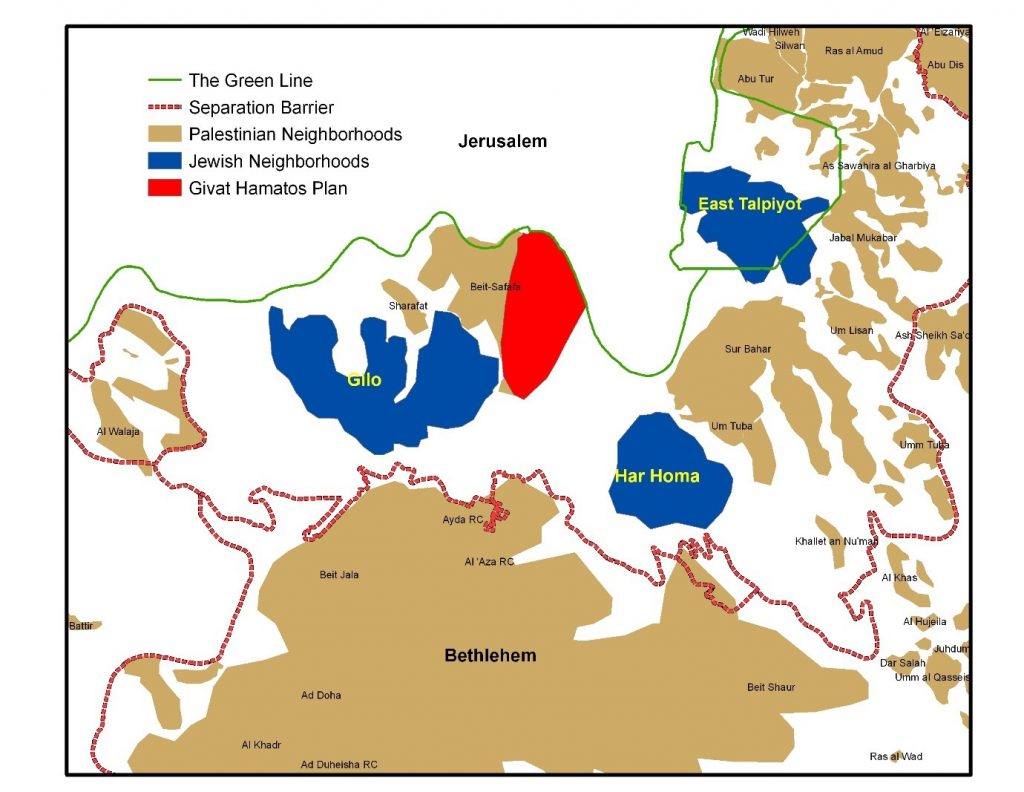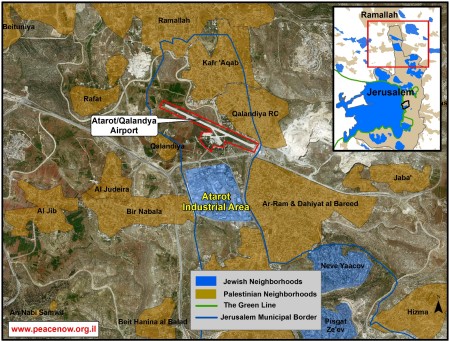News from Peace Now:
Last week, several press
reports have suggested that the government is preparing to advance 15,000 new housing units in three
Israeli neighbourhood-settlements at East Jerusalem. According to the publications, the plans are for the
establishment of a new neighbourhood at Atarot (10,000 housing units), expanding Ramat Shlomo (3,000 housing units)
and establishing Givat Hamatos (2,000).
Peace Now is deeply concerned regarding the possible development in Givat Hamatos in particular, which is
the most immediate, and will pose a serious threat for a compromise in Jerusalem based on the Clinton Parameters,
and thus for the possibility of a two state solution.
Our Analysis:
1. Givat Hamatos
There are four plans, at different planning stages, for Givat Hamatos. The plans, initiated by the Israeli Land Authority (ILA) and the Jerusalem Development Authority (JDA), are being promoted in Jerusalem municipality’s local planning committee, comprised of elected and politically motivated city council members.
|
The implication of construction in Givat Hamatos are as follows:
a. Givat Hamatos will create a territorial barrier of Israeli settlements between East Jerusalem and Bethlehem. Givat Hamatos is located between Gilo and Har Homa, two Israeli neighbourhoods that are located beyond the Green Line and north of Bethlehem. Establishing a third neighbourhood, Givat Hamatos, will enhance the territorial continuity of Israeli settlements that create a buffer between East Jerusalem and Bethlehem.
c. The first new Israeli neighbourhood in East Jerusalem in 20 years. Givat Hamatos will be the first Israeli neighbourhood in East Jerusalem since Har Homa in 1997, when Netanyahu was the Prime Minister for the first time. Establishing the new settlement will create a new footprint of an Israeli neighbourhood in East Jerusalem.

The establishment of a new neighbourhood at Atarot will be a devastating new development that will hinder the possibility of a two-state solution. It will create a new fact on the ground that will isolate Ramallah from East Jerusalem. In the past, there have been indications of a desire to establish this neighbourhood, however we are not familiar with an actual plan that is being promoted. If publications are true, it will be the first time that such a plan is exposed to the public and advanced. Currently Atarot serves as an industrial area and it has an airport that ceased to function in 2001, considered by Palestinians to be their future airport in Palestine.

Ramat Shlomo has become familiar due to the tenders that were published for the neighbourhood during a visit of then US vice president Joe Biden in 2010. It is likely that advancing 3,000 new housing units at Ramat Shlomo would impact the territorial border of the settlement however we currently do not have information regarding any such plans.
For further analysis by Terrestrial Jerusalem click here.
